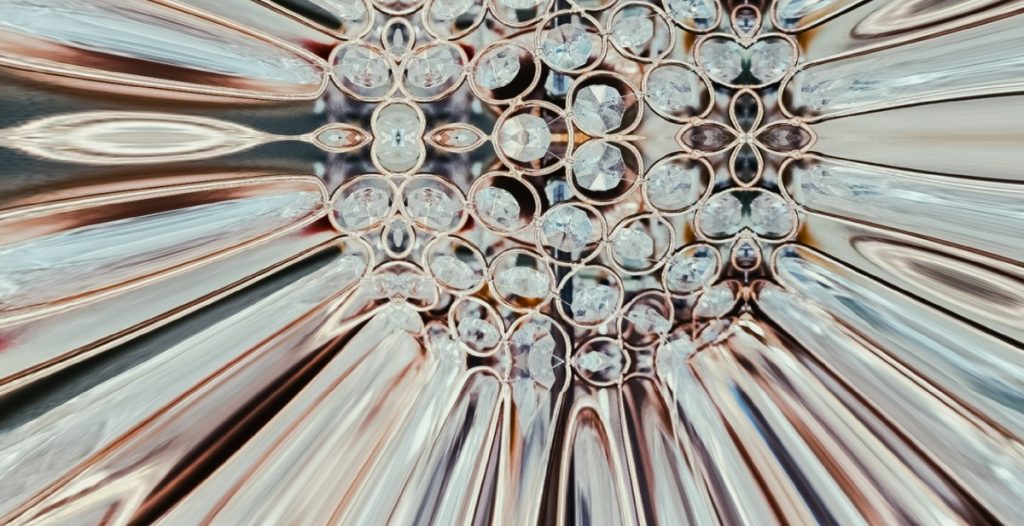What is the difference between a diamond and a cubic zirconia?
Diamonds and cubic zirconia are two of the most popular stones used in jewelry. While they may look similar, they are very different in terms of their properties, value, and origin. In this article, we will explore the differences between diamonds and cubic zirconia, and why it is important to know the difference.
What is a diamond?
Diamonds are a natural gemstone that are formed deep within the earth’s crust over millions of years. They are made of pure carbon and are the hardest known substance on earth. Diamonds are graded based on the 4Cs: carat weight, color, clarity, and cut. They are highly valued for their rarity, beauty, and durability.
What is a cubic zirconia?
Cubic zirconia, on the other hand, is a man-made stone that is created in a laboratory. It is made of zirconium dioxide and is designed to mimic the look of a diamond. Cubic zirconia is much less expensive than diamonds and is often used as a more affordable alternative.
Why is it important to know the difference?
Knowing the difference between a diamond and a cubic zirconia is important for several reasons. Firstly, it allows you to make an informed decision when purchasing jewelry. If you are looking for a high-quality, valuable stone, then a diamond may be the best choice for you. However, if you are looking for a more affordable option that still looks beautiful, then a cubic zirconia may be a better choice.
Additionally, knowing the difference between the two can help you avoid scams or fraudulent activity. Some unscrupulous sellers may try to pass off cubic zirconia as diamonds in order to make a quick profit. By knowing the differences between the two, you can protect yourself from being taken advantage of.

Physical Differences between Diamond and Cubic Zirconia
While diamonds and cubic zirconia may look similar to the untrained eye, they have significant physical differences that set them apart. These differences include their composition, hardness, and density.
Composition
One of the primary physical differences between diamond and cubic zirconia is their composition. Diamond is a naturally occurring mineral and is made up of pure carbon. Cubic zirconia, on the other hand, is a synthetic material made from zirconium dioxide.
Diamonds are formed deep within the earth’s mantle under extreme pressure and heat. They are then brought to the surface through volcanic eruptions. Cubic zirconia, on the other hand, is created in a laboratory setting through a process called the Verneuil method.
Hardness
Another significant physical difference between diamond and cubic zirconia is their hardness. Diamond is the hardest natural substance on earth, with a rating of 10 on the Mohs scale of mineral hardness. This means that it is extremely difficult to scratch or damage a diamond.
Cubic zirconia, on the other hand, is much softer than diamond. It has a rating of 8-8.5 on the Mohs scale, which means it is more susceptible to scratches and damage than diamond.
Density
Diamond and cubic zirconia also differ in their density. Diamond is a very dense material, with a specific gravity of 3.52. Cubic zirconia, on the other hand, is less dense, with a specific gravity of 5.6-6.0.
This difference in density means that cubic zirconia is much heavier than diamond. In fact, cubic zirconia is about 1.7 times heavier than diamond. This difference in weight can be an important factor to consider when purchasing jewelry, as it can affect the overall comfort and wearability of the piece.
| Physical Property | Diamond | Cubic Zirconia |
|---|---|---|
| Composition | Pure carbon | Zirconium dioxide |
| Hardness (Mohs scale) | 10 | 8-8.5 |
| Specific Gravity | 3.52 | 5.6-6.0 |
In conclusion, while diamonds and cubic zirconia may appear similar at first glance, their physical differences are significant. These differences include their composition, hardness, and density. Understanding these differences can help you make an informed decision when purchasing jewelry or other items that contain diamonds or cubic zirconia.

Visual Differences
When it comes to visual differences between diamonds and cubic zirconia, there are a few key factors to consider. These include color and clarity, as well as brilliance and fire.
Color and Clarity
One of the most noticeable differences between diamonds and cubic zirconia is their color and clarity. Diamonds are known for their natural colorless or near-colorless appearance, while cubic zirconia can come in a variety of colors. However, most cubic zirconia used in jewelry is clear and colorless, mimicking the appearance of a diamond.
Clarity is another factor to consider. Diamonds are graded on a scale from “flawless” to “included,” with “flawless” diamonds having no visible inclusions or blemishes. Cubic zirconia, on the other hand, is typically flawless or near-flawless, with no visible inclusions.
Brilliance and Fire
Brilliance and fire are terms used to describe a gemstone’s ability to reflect light and create sparkle. Diamonds are known for their exceptional brilliance and fire, which is due to their high refractive index. Cubic zirconia, while still quite brilliant, does not have the same level of fire as a diamond.
Additionally, cubic zirconia is known for its “rainbow effect,” which is caused by light passing through the stone and breaking into its component colors. While some people find this effect desirable, it is not typically seen in diamonds.
| Factor | Diamond | Cubic Zirconia |
|---|---|---|
| Color | Natural colorless or near-colorless | Clear and colorless, but can come in a variety of colors |
| Clarity | Graded on a scale from “flawless” to “included” | Flawless or near-flawless |
| Brilliance and Fire | Exceptional brilliance and fire | Less fire than a diamond, but still quite brilliant |
Overall, while diamonds and cubic zirconia can look quite similar to the untrained eye, there are several key visual differences that can help distinguish between the two. By considering factors such as color and clarity, as well as brilliance and fire, it is possible to determine whether a particular stone is a diamond or cubic zirconia.

Value Differences
When it comes to value, there are significant differences between diamonds and cubic zirconia. These differences can impact both the initial cost and the resale value of these gemstones.
Cost
The most obvious difference between diamonds and cubic zirconia is the cost. Diamonds are one of the most expensive gemstones in the world, and their value is determined by the 4Cs: carat weight, color, clarity, and cut. The larger and more flawless the diamond, the higher the price tag.
On the other hand, cubic zirconia is a man-made gemstone that is much more affordable than diamonds. The cost of cubic zirconia is determined by its size and quality, but even the highest quality cubic zirconia is significantly cheaper than a diamond of the same size and quality.
| Gemstone | Average Cost per Carat |
|---|---|
| Diamond | $3,500 – $20,000+ |
| Cubic Zirconia | $10 – $50 |
Resale Value
Another important factor to consider when comparing diamonds and cubic zirconia is their resale value. Diamonds are known for holding their value over time, and they can even appreciate in value depending on the market. This is because diamonds are a finite resource, and their rarity and beauty make them highly sought after.
Cubic zirconia, on the other hand, does not hold its value over time. In fact, cubic zirconia has virtually no resale value, and it is not considered a good investment. This is because cubic zirconia is a synthetic gemstone that can be easily replicated, and it does not have the same rarity or beauty as a diamond.
- Diamonds are known for holding their value over time
- Cubic zirconia has virtually no resale value
Overall, while diamonds are much more expensive than cubic zirconia, they are also a better investment in the long run. If you are looking for a gemstone that will hold its value and appreciate over time, a diamond is the way to go. However, if you are on a budget and looking for a more affordable option, cubic zirconia can provide a similar look without breaking the bank.

Conclusion
Choosing the right stone for your jewelry can be a daunting task, especially when it comes to deciding between a diamond and a cubic zirconia. Both stones have their advantages and disadvantages, and the choice ultimately comes down to personal preference and budget.
Diamonds
Diamonds are the traditional choice for engagement rings and other high-end jewelry. They are the hardest known natural substance, which makes them durable and long-lasting. Diamonds also have a unique brilliance and fire that is unmatched by any other stone. However, they are also the most expensive option and can be out of reach for many people.
Cubic Zirconia
Cubic zirconia, on the other hand, is a man-made stone that is much more affordable than diamonds. While it may not have the same prestige as a diamond, it can still be a beautiful and high-quality option for your jewelry. Cubic zirconia is also available in a wide range of colors, making it a versatile choice for any style.
Consider Your Needs
When choosing between a diamond and a cubic zirconia, it’s important to consider your needs and budget. If you’re looking for a durable and long-lasting stone with a unique brilliance and fire, then a diamond may be the right choice for you. However, if you’re looking for a more affordable option that still looks beautiful and can be customized to your liking, then cubic zirconia may be the better option.
Final Thoughts
Ultimately, the choice between a diamond and a cubic zirconia comes down to personal preference and budget. Both stones have their advantages and disadvantages, and it’s up to you to decide which one is right for you. No matter which stone you choose, make sure to take care of it properly so that it can last for years to come.

